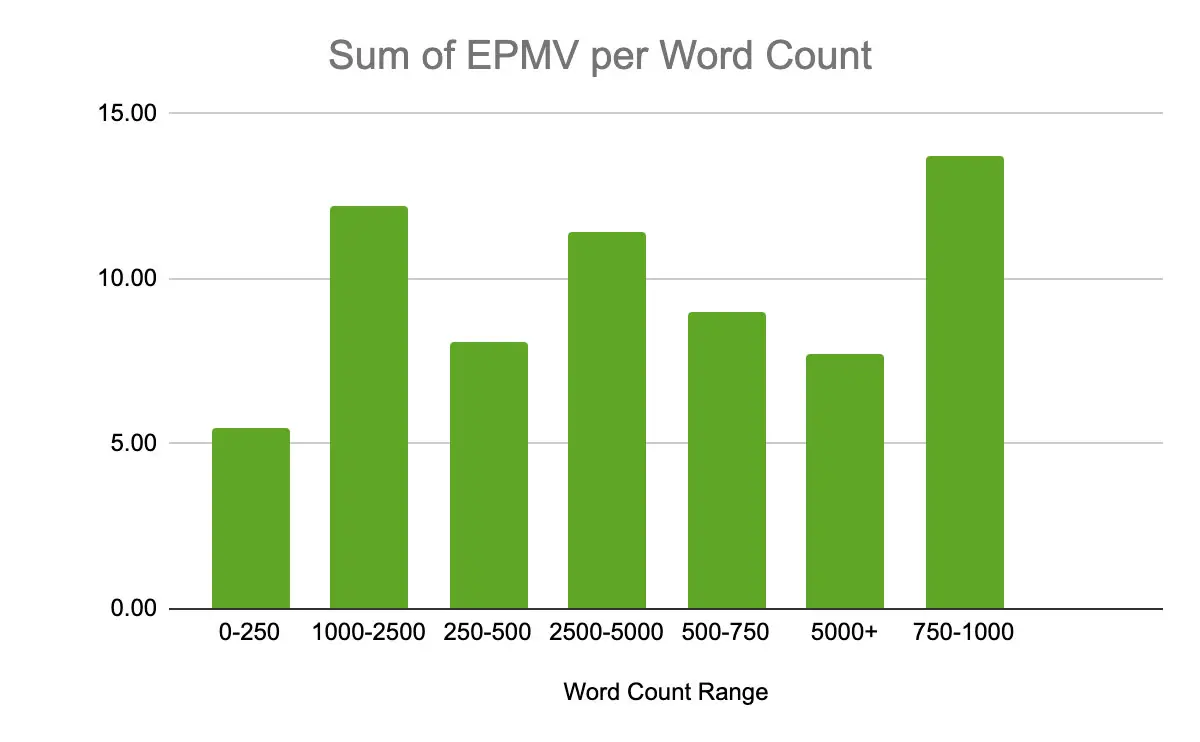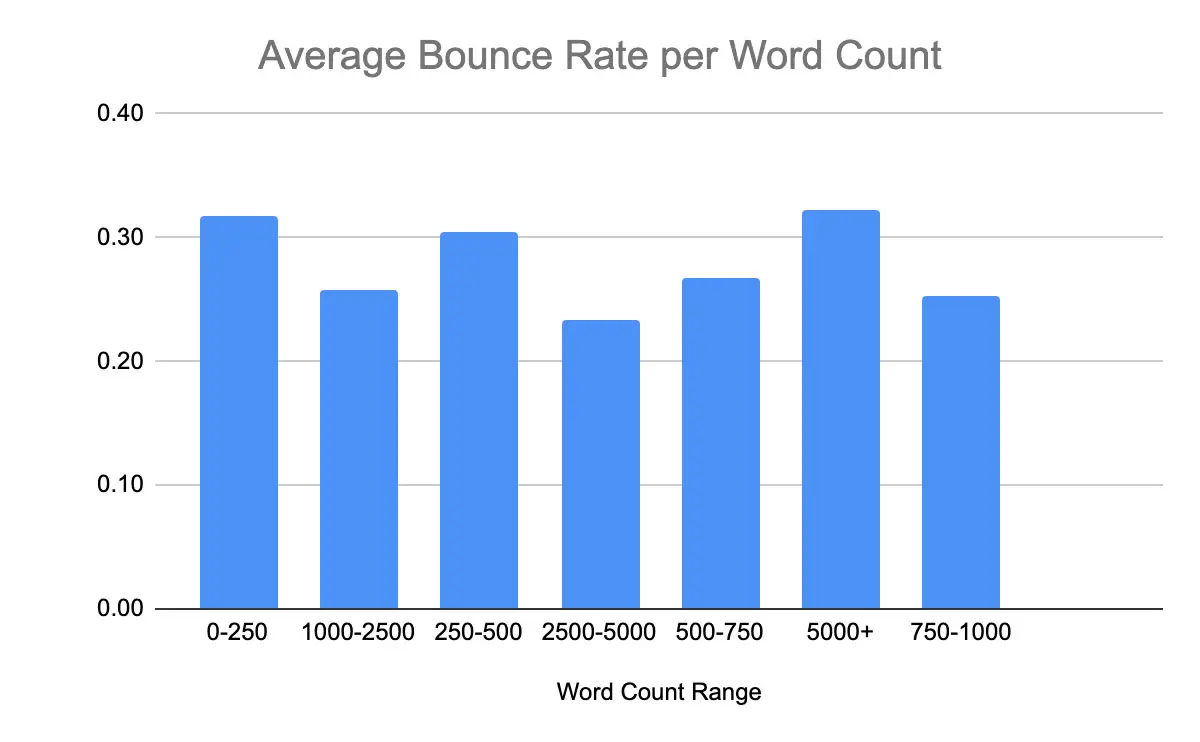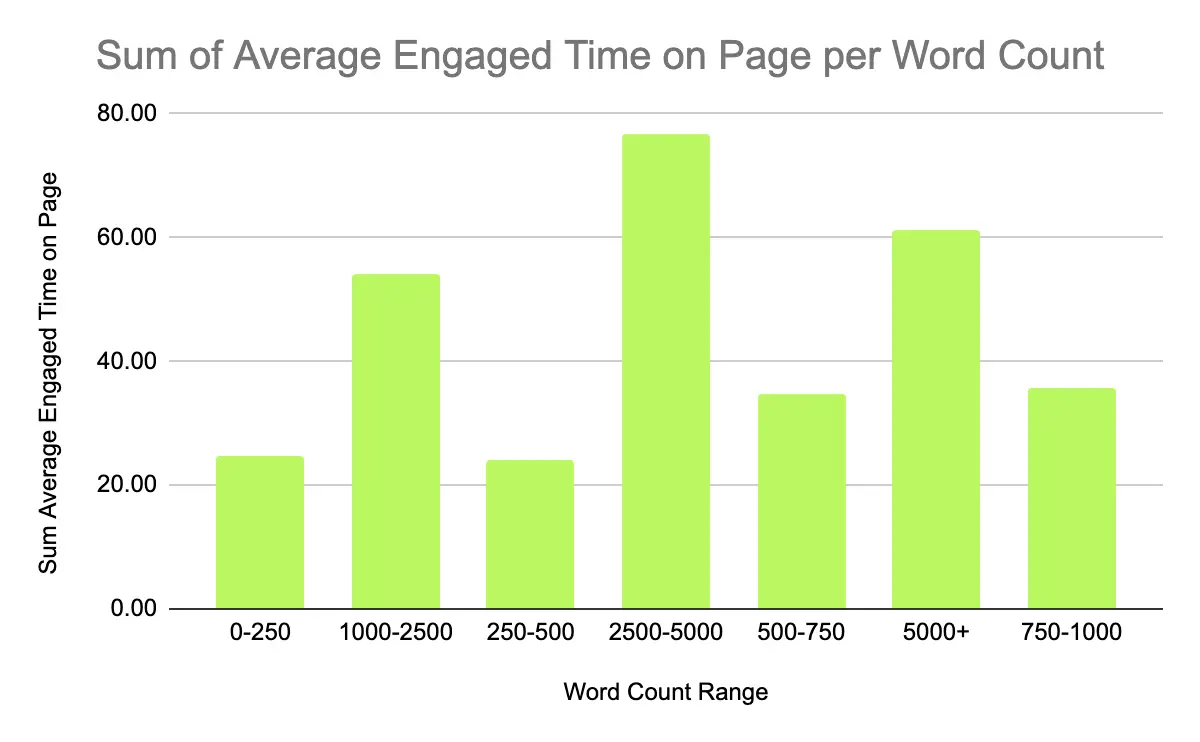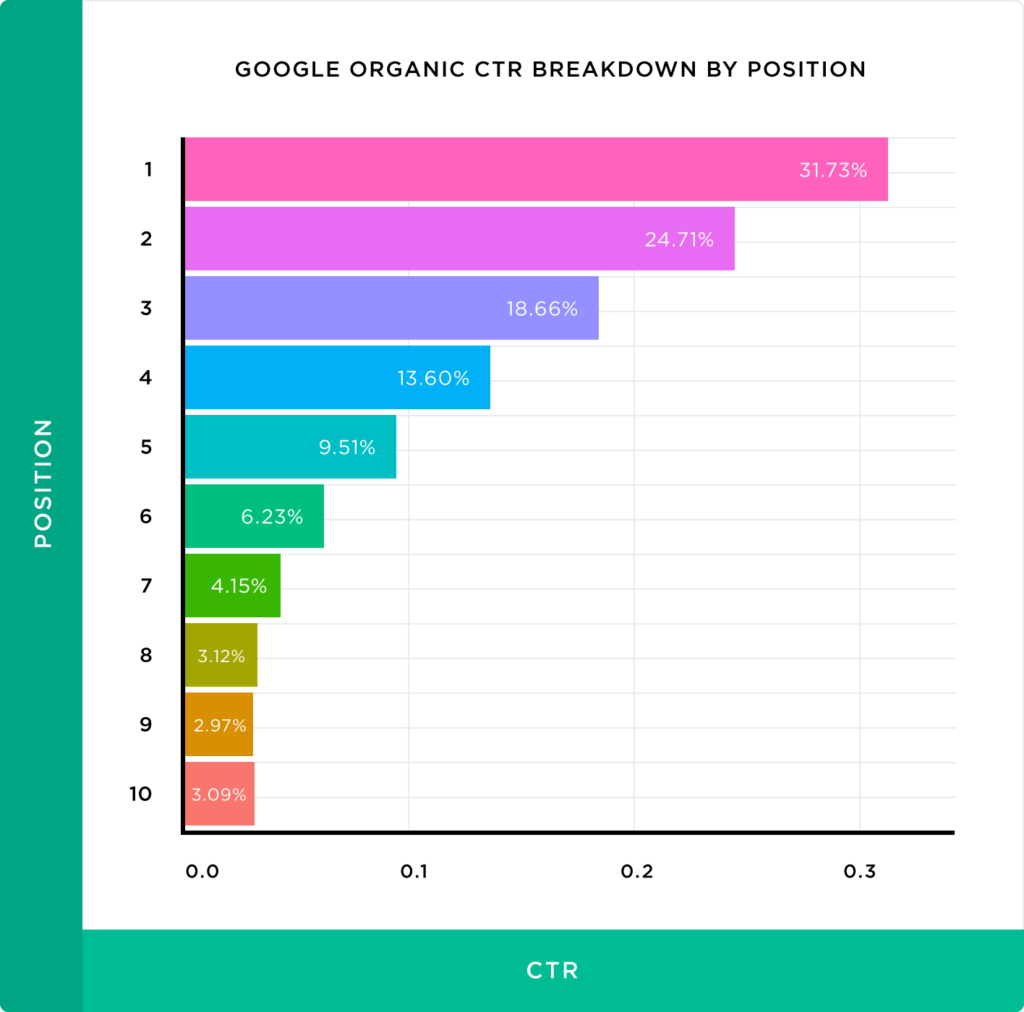Publishers who monetize with display ads typically want to get the most value possible from their content. How does one accomplish that goal? There a variety of factors that affect how much revenue publishers earn—UX, ad placement, ad size, the value of your available ad inventory to advertisers, and more. But what about the content itself? Many wonder what content length earns the most money from ads.
The internet is littered with sources claiming what the optimal content length for SEO and revenue is. We ran the data of over 3,800 publishers to find what content length earns the most money from ads.
What content length earns the most money for publishers?
 The data show a finding that is opposite to most studies online on content length and how it affects ad revenue. The word count range with the highest EPMV (earning’s per thousand visitors) is 750-1000 words.
The data show a finding that is opposite to most studies online on content length and how it affects ad revenue. The word count range with the highest EPMV (earning’s per thousand visitors) is 750-1000 words.
Additionally, the second-highest-earning word count range was 1000-2500 words. This word count range is more similar to what SEO “experts” say to shoot for in terms of content length.
The third-highest-earning word count range was 2500-5000 words. These types of articles are lengthy and often written in a way to maximize SEO potential. We can see from the data that while still in the top three, it’s not the best content length for increasing ad revenues.
Does content length affect bounce rate?

We can see that longer content has lower bounce rates. This is true with a content length between 2500-5000 words that had a bounce rate of 23%.
Interestingly, content between 500-750 words had a lower bounce rate than articles over 5000+ words. This seems counterintuitive since articles between 2500-5000 words had the lowest bounce rate. The content lengths with the two highest bounce rates were both the highest and the lowest word count ranges—0-250 words and 5000+.
Keep in mind, the way Ezoic measures a navigation bounce differs from how Google Analytics measures it.
For example: a user lands on a page of your site, spends 10 minutes reading the entire article and then navigates away, Google Analytics counts this as a bounce. Ezoic’s Big Data Analytics views this interaction as a success since the user most likely found what they were looking for
Does content length affect visitor engagement?

The content length with the highest average engaged time is 2500-5000 words. This time, content over 5000+ words performed better than content between 1000-2500 words, but just slightly.
Nonetheless, the top three content length ranges demonstrate that long-form content engages visitors longer. While this has been known in digital publishing for some time, this data confirms the information SEOs and publishers have been operating under for years.
The lowest average engaged times on page by word count were 0-250, 250-500, and 500-750. The shorter your content is, the lower engaged time on page you’re likely to have.
Remember: Engaged time is defined as when a visitor has the content in an active browser tab, scrolling, copying/pasting text, etc.
Does content need to be a certain length to rank on Google?
No. While there’s no “magic” length content needs to be to make your articles to appear in Google, data exists to help point you in the right direction.
Backlinko analyzed 912 million blog posts and found that the content length for maximizing social shares is 1,000-2000 words. The data points to long-form content generating more social shares than shorter content. They also found that there is a point of diminishing returns once article length goes over the 2,000 word mark.
Publishers who use Ezoic’s Big Data Analytics avoid the guesswork of having to figure out what content length performs best.

This publisher’s top-performing content length was a word count range between 2500-5000 words. It had the lowest bounce rate, highest page RPM, and the largest chunk of total revenue. This range also had the second-highest average page engaged time of 55 seconds. It’s clear that for this publisher, long-form content is the main driver behind revenue and visitor engagement.
How can you write better content that earns more money?
There’s no guarantee that writing better content will earn you more money. But, there is a dynamic style of writing web content that helps with higher-ranking positions in Google Search.
Higher-ranking positions in Google’s SERP = more traffic. Increases in traffic typically increase ad revenues. Moreover, the difference between the click-through rate of the 1st and the 10th result on the first page of Google is drastic.

There’s no debate that getting on the first page of Google is essential for getting organic traffic to your site. To help publishers achieve this goal, we created a content writing guide to improve SEO and visitor engagement. Here’s a summary of the advice from the content writing guide:
- Choose a title based on related keywords to a broader topic you would like to write about.
- Include a list of bullets in the introduction that goes over what your content is going to cover.
- Link to other articles you may have written that relate to your new content.
- Break up your content with H2’s and images.
- Provide a succinct answer right underneath your H2s.
- Ask questions in H2s that you find in “people also asked” section of Google and provide answers.
- Don’t worry too much about other heading sizes.
- At the end of your post, summarize what you just went over.
Wrapping up what content length earns the most money from ads?
Summarizing the data on content length:
- The highest-earning (EPMV) content length is between 750-1000 words.
- The content length with the lowest bounce rate is 2500-5000 words
- The highest average engaged time on page is a content length of 2500-5000 words.
In reality, content length should always match the nature of the question the content is trying to answer. Even Google webmasters say that your content should be no shorter or no longer than it needs to be to answer the user’s query.
Having the same word-count as a top-ranking article isn’t going to make your pages rank first, just like having a bunch of USB chargers isn’t going to get you to the moon. But, I’m still tempted to buy some of those USB chargers…https://t.co/TIuJHwHufn
— ? John ? (@JohnMu) February 8, 2020
While this opinion is vague, it gives you a general idea of what Google is looking for—good content that fulfills a user’s search. Do you have any questions on word count and its relation to ad earnings? Let me know in the comments.


Hi,
I agree to writing a detailed article having word count in between 1000 to 2500, but what if you are answering a specific query of users in an article or tutorial, which cannot be stretched to 1000 or even 750 words. Do we need in any way to stretch our articles to a minimum of 750 words for making a decent revenue and ranking on first page of google??
Thanks for this great informative article. Yes, as said 2500+ helps to rank well for keywords in SEO, but then your info stating 750-1000 is a point to accept because users wants something informative with decent content length to read, enjoy and gain knowledge than going through so much of thesis. Thanks.
Can you please reformat these charts so that the “Word count ranges” are displayed in a logical order? My initial takeaway from looking at this was that the longest articles perform the best, which is not accurate. A critical consideration in any content — especially data-driven content — is making sure that your audience can understand it.
I am a content writer but one thing I fail to understand which content will work the best at what time. But this information is quite helpful and informative. My most content ranged from 1000-2000 but seriously amazing post.
Lot of interesting ads. However word count is of no interest to me only length of ad. I’ve found most ads of interest to me are composed of 90% waffle and only the last 10% giving the information I want. Usually I switch off after the first few minutes of waffle. Verbal diarrhoea!!
Thanks for this such great post. Yes, as allen said more than 2500 helps to rank well for keywords in SEO, but then your information mentioning 750-1000 is somewhat acceptable because users wants something clear and precise content length to read, enjoy and gain knowledge than longer one .
Being a journalism graduate and having written 50 books using the double inverted pyramid style of writing with the most appealing information at the top of the article and then repeating it in the summary does garner the highest readership. Good job digging this fact out!
I’m a journalism graduate as well, Barry. Glad you enjoyed the article!
I love the originality of your content. its very helpful. thanks again for sharing and keep up the exceptional work.